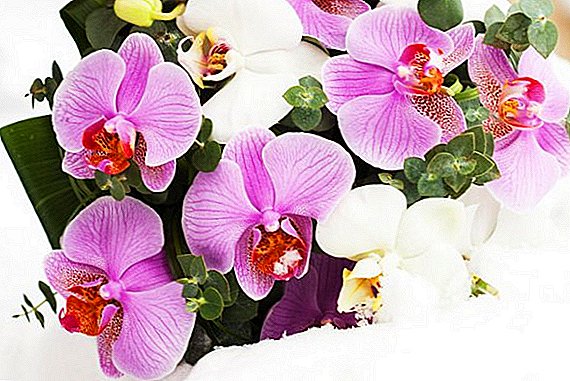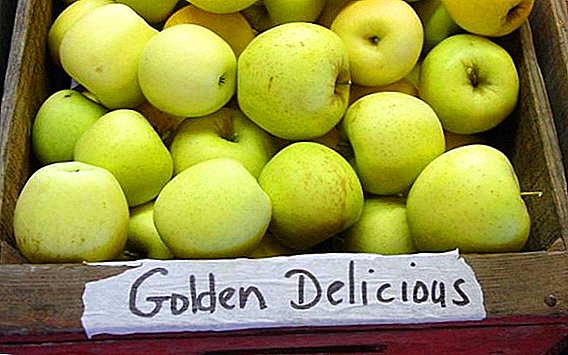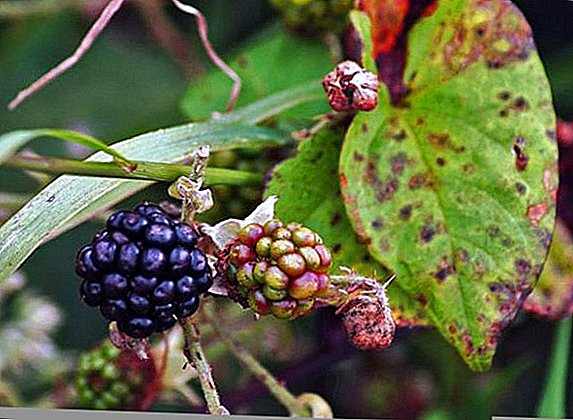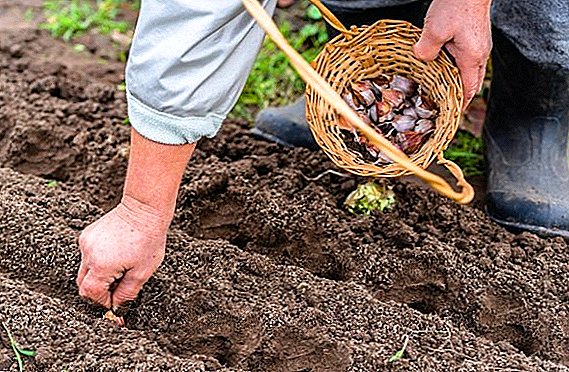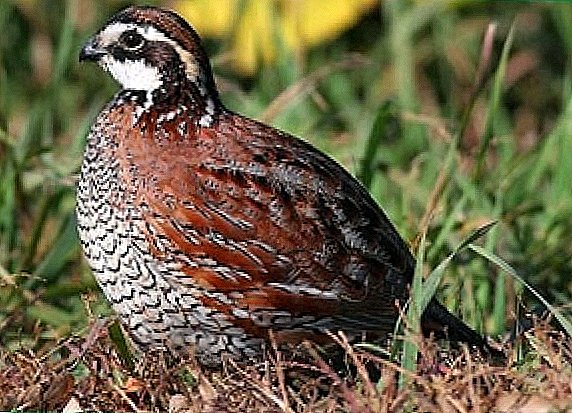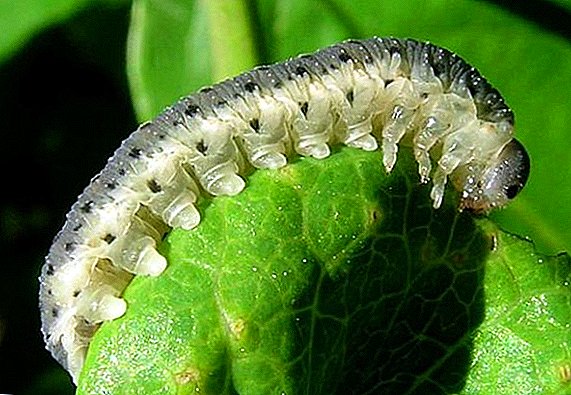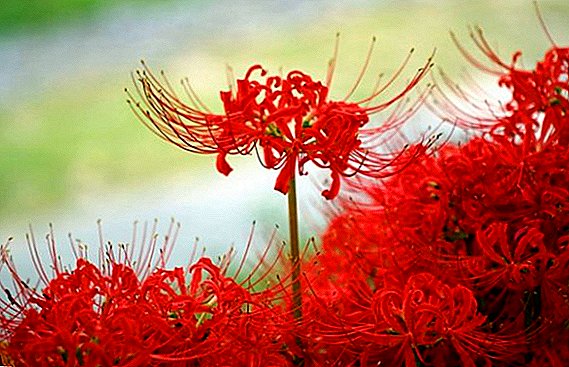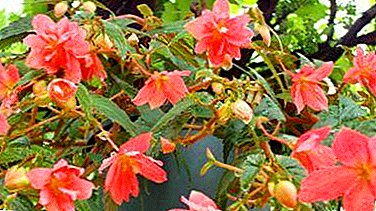
Ampel begonias - the excellent decision for dressing of arbors, personal plots and fences. Tuberous perennial differs unpretentiousness in the care and is characterized by long drooping shoots, bright leaves, a variety of forms and a wide range of colors. This article will tell you what Ampelnaya Begonia is, what plant varieties exist and how to choose, how to plant and how to care, what you need to propagate begonia, as well as what pests and diseases can threaten it.
What is this flower?
Ampelnaya begonia is a bush of 20-25 cm in height. Shoots reach 40 cm in length. Asymmetrical green leaves are formed on bulk stems. The flowers have a diameter of 5 cm, monoecious, same-sex and bright colors:
- Pink
- Red
- Orange.
- Mixed.
On ampelous begonias grow two types of flowers: female and male.
Reference! Flowers on begonias live no more than 10 days and die. Long flowering due to the constant development of new buds.
In the open ground, the culture blooms from mid-summer and continues to bloom until frost (subject to proper care). At home, ampelous begonia is strewn with flowers almost all year round.
Ampel begonias hail from tropical and subtropical rainforests. Asia, India, Africa, South America. By the end of the XVII century, this culture has spread in Europe. She brought in a nerd Plume. Its name - "begonia" plant received in honor of Begon - the organizer of the expedition to the islands of South America.
Varieties of plants with photos and names
There are dozens of varieties of hybrid origin. They were obtained and adapted by breeders under our climatic conditions. There is a large series of varieties of tuberous ampelous begonia - Chanson. Plants are characterized by semi-double and double flowers 6-8 cm in diameter, camel-shaped. The length of the shoots from 30 to 40cm. Popular varieties of the Chanson series:
- Vanilla yellow.
- White
- Salmon
- Copper.
- Dark red
- Two-tone pink and white.
- Two-tone orange-yellow and others.
Ampel varieties of flower growers secrete a separate subgroup of tuber begonia. Its main difference is drooping growth of twigs. This is clearly seen in the photo.
Consider the photo series of varieties:
Vanilla yellow:
White:
Salmon:
Copper:
Dark red:
Two-tone pink-white:
Two-tone orange-yellow:
Landing features
Planting material purchased in the winter. Sprouting begin in March. Healthy tubers are planted in pots with a diameter greater than 3 cm. Before planting, they are kept in sand and on damp cloth. Be sure to light and warm. Planting material is periodically sprayed with soft warm water. Utensils should be small and wide and with a drainage hole.
Features planting ampelous begonias in the pot:
- At the bottom of the tank lay a layer of broken brick or gravel, covered with sand from above.
- Pour the substrate for begonias. For prevention, the soil is treated with a fungicide or potassium permanganate.
- Planting material spread on a wet ground with a convex side.
- The space around fall asleep. The top part is left free.
- Fully tubers fall asleep only after the appearance of sprouts. But not deep.
Begonias planted in pots are kept in a warm bright place.
Watered gently, not allowing moisture to the tubers. Ampel begonia accustomed to the bright but diffused sun. For planting in the garden choose a place protected from the wind and the scorching sun.. Shading is necessary to avoid burns on the leaves.
A good time to land on the street is the beginning of July. The soil for begonias must be breathable and with neutral acidity. Sandstone mixed with peat and leaf humus will do. If the garden area is dominated by loam, it is diluted with leaf humus, sand.
Algorithm of planting ampelous begonia on the street:
- Make holes for each bush, taking into account its size. Between large plants, the interval should be at least 30 cm, between medium ones - 20 cm, between small plants - 15 cm.
- In the wells add a mixture of ash with humus or a special substrate.
- Moisten the soil and place the seedlings.
- The bottom of the escape is covered with earth.
Soil sprinkled with ash and humus. Be sure to loosen the soil for oxygen to flow.
How to care?
Home-made begonia prefers good lighting with soft, diffused light at home. It is advisable to put pots with plants in places where the morning and evening sunlight will fall on them (before 11 and after 15 o'clock). It is best to place flowers on the eastern and western window sills.
The leaves will burn, fade and begin to wither. Temperature condition:
 In the summer, not higher plus 20-22 degrees.
In the summer, not higher plus 20-22 degrees.- In winter, not lower than plus 15.
- During the rest period - plus 7-10.
In the summer, containers with plants can be taken out on the balcony or terrace. Put in a place protected from wind and rain. Begonias love regular but moderate watering. Excess moisture leads to decay of the root system.
Watering rules:
- Moisturizing mode - 2-3 times a week.
- Spraying from the sprayer is excluded.
- You can not take for watering cold water from the tap. Before use, it is defended during the day, filtered or boiled.
- Moisture is distributed evenly throughout the vessel.
- Do not allow the soil to dry out.
Pour over begonias with soft water only. In winter, moisture is reduced. Carried out as the land dries out once a week. In the period of abundant flowering water more often.
In the growth phase, the ornamental culture is fed with nitrogen fertilizers. At the time of flowering make compositions with a low content of nitrogen and saturated with phosphorus and potassium. 1-2 times a year can be fertilized with organic matter. As needed, dried leaves and flowers are removed from the begonias.
Open-field crops are provided with regular watering, fertilizer and weeding. Watering features:
- Moisturize plentifully (especially in dry weather), but do not allow stagnant moisture.
- Watering is carried out every 3 days. Better in the morning.
- Water around the root.
Young plants are fed with phosphate and potash fertilizers. Flowering bushes fertilized with complex compounds. With the onset of a cold snap feeding and watering stop. Dead begonias are prepared for winter: the stalks are cut, tubers are dug out after 2 weeks. After drying, they are cleaned, put in a box and left for storage in a cool place: in the refrigerator or in the basement.
- How to keep the plant in winter?
- Why does not bloom tuberous begonia?
- Flower reproduction by cuttings.
- Basic rules for planting and caring for tuberous begonia.
- How to care for a plant at home?
- How to grow a tuberous begonia?
You can also read interesting material about the Bolivian begonia.
Major Diseases and Pests
In begonias, common rot is gray rot, powdery mildew. A solution of copper sulphate with soap is used against gray rot. To win the powdery mildew will help drugs Morestan or Fundazola.
Causes diseases:
- Over-watering: yellowing, abscission and leaf rot.
- Too dark place: leaves are stained.
- Dry air: abscission of buds, flowers and leaves.
- Heat: leaves fade.
Begonias affect pests: greenhouse aphids, soft pseudo-shield, whitefly, greenhouse thrips, spider mites and others.
To prevent diseases and attacks of harmful insects use protective systemic fungicides.
Effective fungicides of complex action:
- Fundazol.
- Maksim.
- Topaz.
- Fast
- Fitosporin-M
Breeding
Ampel begonias are propagated by seed, cutting, division of tubers. Seeds are planted in late February. For granulated seeds, peat tablets are used as a primer. They are laid out on a pallet and moistened abundantly. Sow the seeds and sprinkle with room water. Cover with polyethylene. Moisturize regularly.
 Ordinary seeds are sown in boxes in non-acidic soil with drainage.. Store in a bright room at a temperature of + 22-24 degrees.
Ordinary seeds are sown in boxes in non-acidic soil with drainage.. Store in a bright room at a temperature of + 22-24 degrees.
Reproduction by cuttings:
- Cutting and preparation of stems.
- Remove excess leaves and dry slices.
- The location of the processes in a vessel with water at room temperature.
- Planting in pots after the appearance of the roots.
For reproduction by dividing a tuber it is cut into several pieces., so that on each lobule there was a developed escape. Sections are treated with charcoal and dried during the day. Then planted in a container. Observing the basic rules of care, even a novice gardener is able to grow an ampel begonia.
The main conditions are the choice of a bright place with protection from direct sun, regular watering without waterlogging, prevention of diseases and the appearance of pests.


 In the summer, not higher plus 20-22 degrees.
In the summer, not higher plus 20-22 degrees.